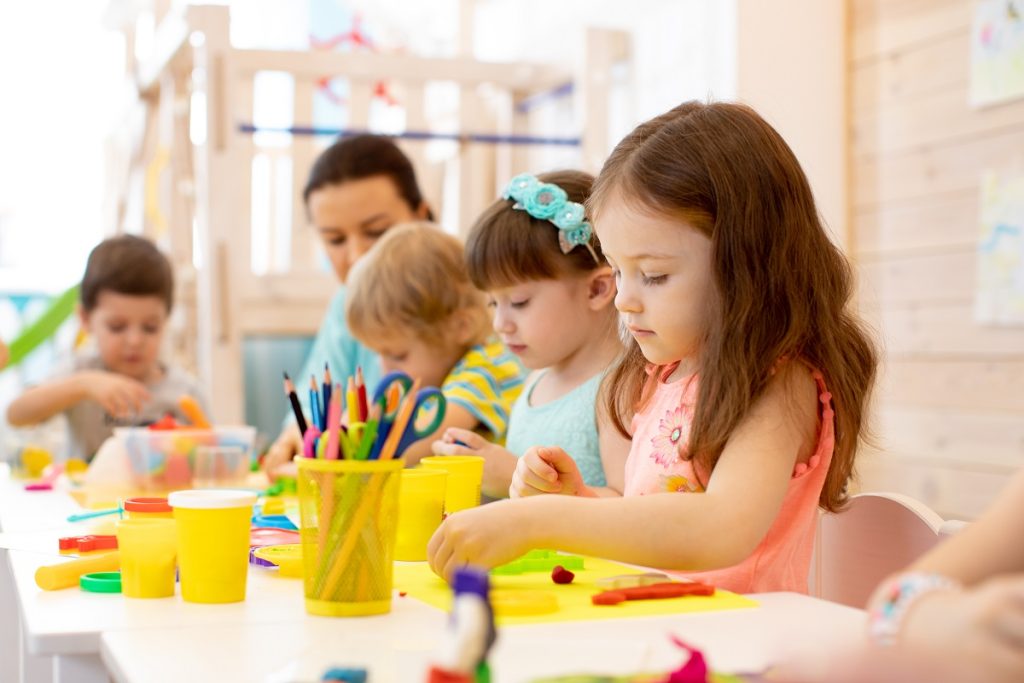- Creativity in children is the ability to develop fresh ideas, explore new possibilities, and find imaginative solutions to everyday challenges.
- Fostering creativity has many benefits, including enhancing problem-solving skills, strengthening self-expression, and developing resilience.
- Ways to foster creativity include encouraging creative play and exploration and starting early.
- It’s essential to allow mistakes and emphasize problem-solving in the creative process.
- Creating an environment that encourages creativity can also support your child’s growth.
Are you eager to help your child unleash their creative potential? Nurturing your child’s creativity at a young age can be rewarding. This blog post will explore practical tips and ideas that will guide you in fostering creativity in your little one.
Creativity is not just about making art; it’s about thinking outside the box, solving problems, and expressing oneself uniquely. By embracing and encouraging your child’s creativity, you’re setting them on a path to discover their boundless imagination.
What is Creativity in Children?
Creativity in children is like a garden waiting to bloom. It’s the ability to develop fresh ideas, explore new possibilities, and find imaginative solutions to everyday challenges. Picture your child as a little explorer, navigating the world with wonder and curiosity. Creativity allows them to see beyond what’s right in front of them, giving them the power to turn everyday objects into sources of inspiration.
Creativity is different from imagination. Imagination is like the seed, while creativity is the beautiful flower that grows from it. Vision is about dreaming up fantastical worlds and scenarios, like a child imagining they’re soaring through the clouds on the back of a dragon. Creativity, on the other hand, is the practical application of those imaginative ideas, like using cardboard boxes to create a dragon’s castle.
The Benefits of Fostering Creativity
Encouraging your child’s creativity offers a wealth of benefits. It’s not just about nurturing their artistic talents; it’s about helping them become more resourceful and adaptable individuals. When your child embraces creativity, they:
- Enhance Problem-Solving Skills: Creativity empowers kids to approach problems with a fresh perspective. They become adept at finding solutions that others might overlook.
- Strengthen Self-Expression: Through creative activities, children learn to express their thoughts, feelings, and ideas more clearly. This boosts their confidence and communication skills.
- Develop Resilience: Creativity involves trial and error. Kids learn that it’s okay to make mistakes and that setbacks are growth opportunities.
Ways to Foster Creativity in Your Child
The good news is that there are many ways to stir your child’s creativity! Here are some tips to help you nurture your child’s natural abilities:
Encourage creative play and exploration

Children learn through play, and creativity is no exception. Provide them with open-ended toys and materials such as blocks, art supplies, and construction sets. Encourage them to experiment with different materials, textures, and colors. Give them the freedom to explore and create without any set guidelines.
Start Early
The earlier you begin fostering your child’s creativity, the better. Even as babies, children can engage in creative activities like finger painting or sensory play. One great way to support their creativity is by enrolling them in a daycare center where they can engage in various arts and crafts activities with their peers.
Daycare centers provide a safe and stimulating environment for children to explore their creativity with guidance from trained professionals while they develop social skills and make friends.
Allow Mistakes
Mistakes are often unfavorable, but they can be precious in the creative process. Encourage your child to experiment and take risks without fear of failure. This will help them develop resilience and adaptability, crucial skills for success.
Emphasize problem-solving
Creativity is not just about artistic expression. It also involves problem-solving skills. Encourage your child to think outside the box and devise new solutions to everyday problems. Provide them with opportunities where they can use their creativity to solve problems in real-life situations. This will not only help them in their academic endeavors but also their daily lives.
Foster an environment that encourages creativity

Create a classroom or home environment that fosters creativity. Display their artwork and projects on walls and bulletin boards to encourage creative expression. Provide them a comfortable space to work, brainstorm ideas, and collaborate with their peers. Allow them to listen to music or use sensory tools, such as fidget toys if it helps them concentrate and focus better.
Final Thoughts
As a parent, you play a significant role in nurturing your child’s creativity. By providing opportunities for creative expression and encouraging their unique ideas, you’re setting them on a path to become innovative thinkers who are not afraid to take risks and think outside the box. So, embrace your child’s natural curiosity and creativity and watch them flourish into imaginative and resourceful individuals.

